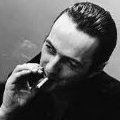Crowned Buddha Images In Thailand
-
Recently Browsing 0 members
- No registered users viewing this page.
-
Topics
-
-
Popular Contributors
-
-
Latest posts...
-
157
Bombshell: Obama & Crew knew all along, Russia Russia was a hoax.
Like you say, SUPPOSED, but someone is currently destroying that at a fast pace, and making it the most laughable nation in the world. Showing your ignorance again. You think just ONE of those troll farms employed 1000 people to post some memes? -
151
Israel leveling Gaza
Err ... it was not any well oiled propaganda but the well oiled Israeli army slaughtering innocent women and children and medics and journallists and helpworkers, and and and, which made people side with them and by THEM I mean the people of Gaza not Hamas. Now exchange Hamas with IDF and you do not nee to FA to FO When people are shocked by the destruction of "children, schools and hospitals" they are sympathizing with children and their schools and hospitals and not with terrorists, That is only how you would like to label them. which makes you a terrorist supporter, a supporter of those terrorists who kill children by the tens of thousands. -
17
-
60
Where are the Tea bags gone ?
A teapot - how very quaint. We use tea bags (which have been around for over 100 years) because they are convenient and efficient and tea strainers are not capable of retaining smaller leaf particles. One can put a few tea bags in one's pocket when on picnic outings, teapots won't go in a pocket and are rather cumbersome don't you. think? We also no don't use those sweet little porcelain cups and saucers, held with one's pinkie sticking out, we use good old half pint mugs because being English tea is a necessity of diet not a social ritual. Worth a mention here is Liptons - right, that's got that out of the way, it deserves no more, and Oolong is a green tea of such delicate flavour you could get the same results with dipping a handful of grass into a cup of water and waving it, in fact I am sure the reason they use a grass whisk in their tea rituals is in fact to add a bit of flavour. And yes, I have sampled both, neither made me puke but a cup of good old PG Tips or Red Label black tea instantly washed away the flavours. But having been in China a few times I learnt early on to pack plenty of good old English teabags made with lovely Indian black tea. -
157
Bombshell: Obama & Crew knew all along, Russia Russia was a hoax.
Wikipedia... YAWN At the end of the day. America claiming someone interferred in their elections is hypocrisy on the biggest scale imaginable. They interfere, Orchestrate coups. Seek régime change or assassinate other countries leaders for their benefit, without any fu.k s given. America is not your country, why are you so obsessed... is it Trump that makes you behave this way.- 1
-

-
224
Trump just made an idiot move
this is true, it doesn't seem the brightest idea...
-
-
Popular in The Pub





.thumb.jpeg.d2d19a66404642fd9ff62d6262fd153e.jpeg)







Recommended Posts
Create an account or sign in to comment
You need to be a member in order to leave a comment
Create an account
Sign up for a new account in our community. It's easy!
Register a new accountSign in
Already have an account? Sign in here.
Sign In Now